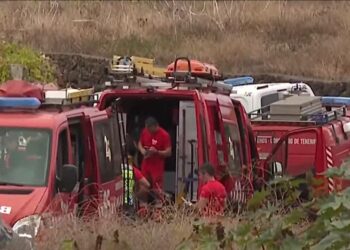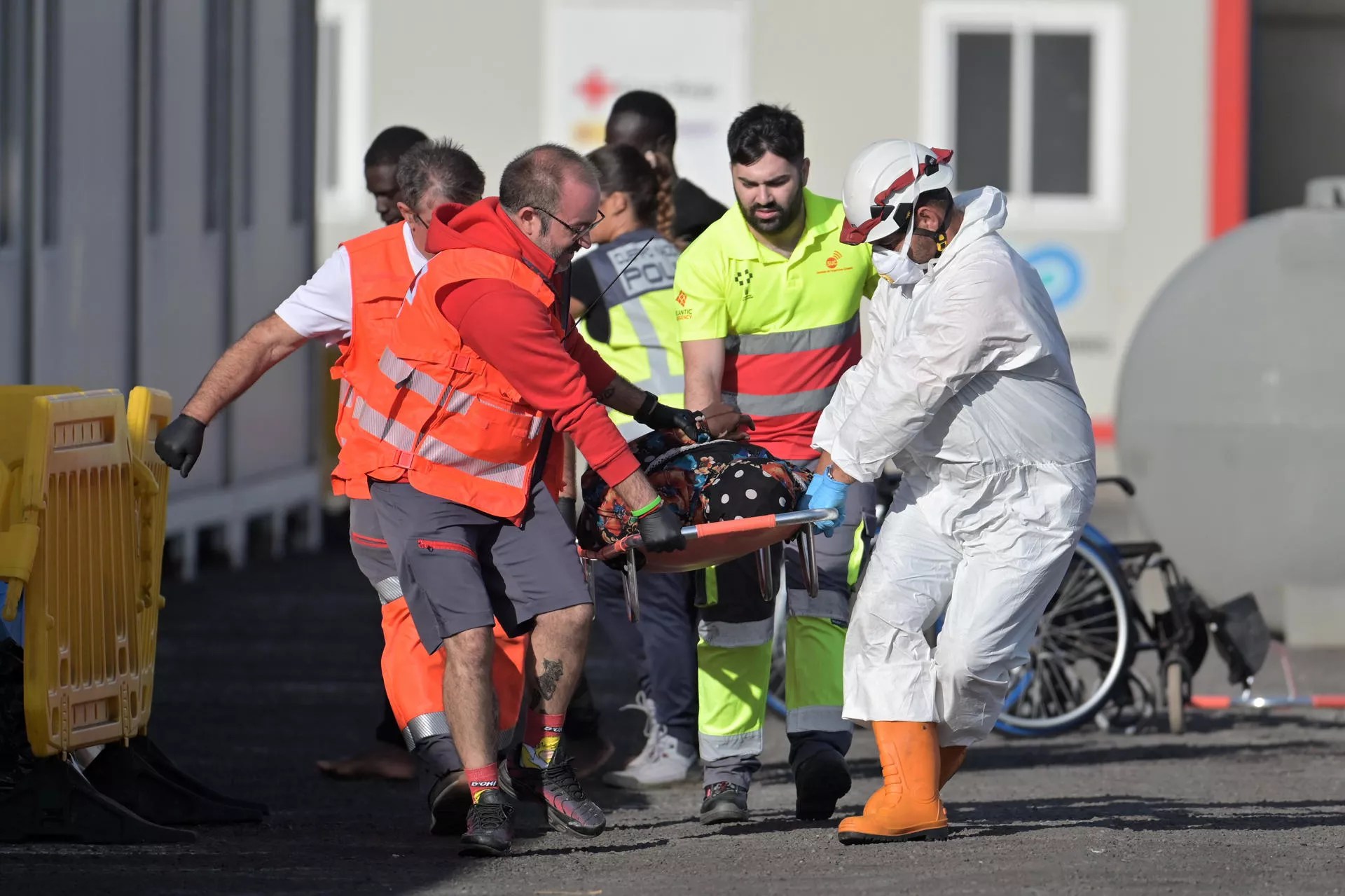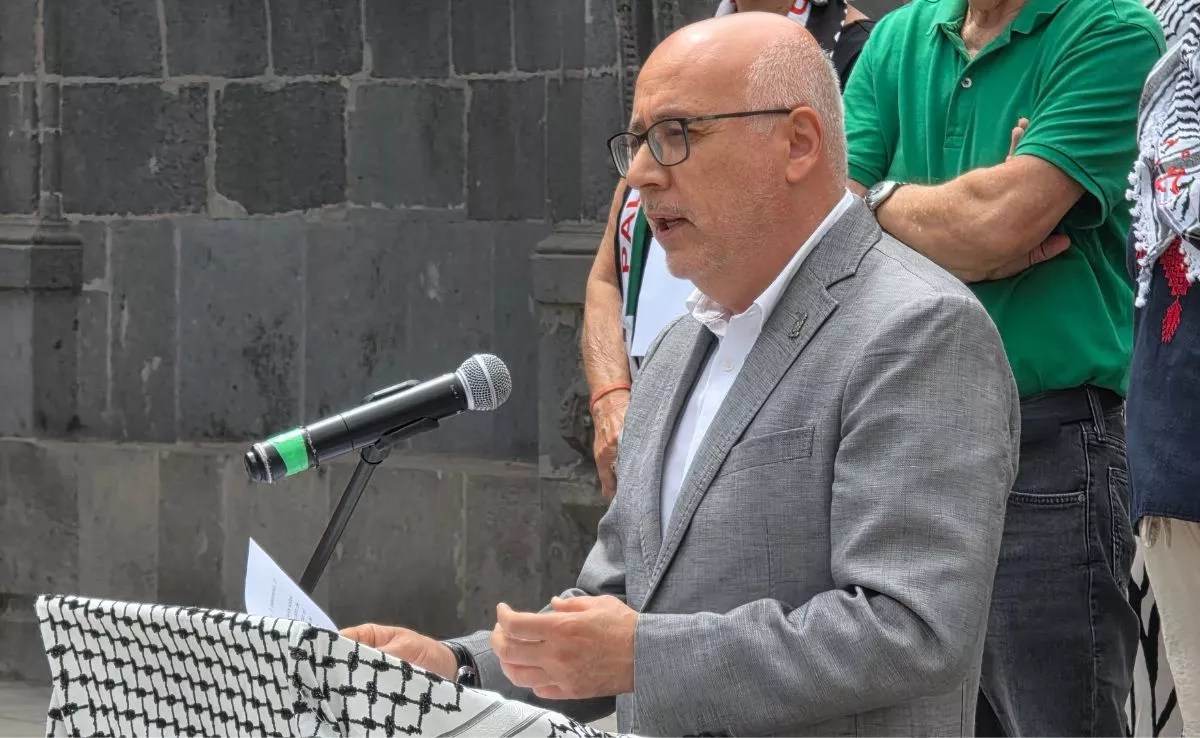Lowering the roads, installing anti-panic benches and relocating the parking lots are the three actions proposed in Garachico to minimize the risk of maritime storms on the coast and which are planned to begin once the summer has passed, in the month of September.
This was announced yesterday by the Minister of Ecological Transition of the Government of the Canary Islands, Mariano Hernández Zapata, during the presentation of the results of the first phase of the pioneering Life Garachico project, whose objective is to adapt the coastal urban areas of Macaronesia to possible marine floods such as consequence of climate change, “an undeniable reality and for which we must be prepared with different strategies to be able to confront it,” he stressed.
The counselor appeared at the old dock with the mayor, José Heriberto González; Carla González, social anthropologist and researcher at the University of La Laguna (ULL); and Christine Bezic, environmentalist at the public company Grafan.
In this framework, he stressed that the Villa and Port is a “laboratory” to launch this initiative due to its high architectural and cultural interest, its geographical location in the Atlantic, located at the foot of the black sands volcano that erupted in 1706. All of this means that it cannot gain more ground from the sea or withdraw from it and that makes it “vulnerable” to the attacks of the sea, with significant marine storms that in the last five years have left significant material losses that exceeded 5 millions of euros.
For all these reasons, it has been the ideal place to launch this pilot project, the first phase of which, consisting of mapping, risk identification and consultation with the population, has been completed. Currently, it is immersed in the second, consisting of the implementation of specific measures against possible coastal flooding, among which the implementation of an early warning system stands out – just yesterday it warned of possible risks at night – that will be integrated into the alert system of the autonomous community and will allow us to evaluate when a flood may occur and in which specific sectors of the coast.
This entire process will be monitored and analyzed to check if the measures are effective or if any changes or modifications are necessary.
The mayor emphasized the “complication” of closing the main avenue when there is a sea storm because it is the regional highway of Isla Baja and that requires diverting light and heavy traffic through the streets of the historic center, designed more than three years ago. centuries, and that they are not prepared to endure it.
Added to this is the risk for people as a result of the storms, which have claimed the lives of people, “therefore, we need foresight and prevention and for this it is essential to have information,” he insisted.
Carla González referred to the social part of the project, focused on working with neighbors, who have local ecological knowledge and are the ones who suffer the consequences of adverse coastal phenomena. With them, self-protection measures were explored with the aim of working in a coordinated manner with technicians, scientists, institutional managers, and the business community.
After carrying out an analysis on exposure and vulnerability and collecting the data, Grafcan, a partner in the project, has designed a viewer in which all the information can be consulted and which the population can access to be able to prepare “as best as possible” against to floods “and understand what could happen in the future,” Christine Bezic explained yesterday. Likewise, she announced that they are working on a project on the viability of using Artificial Intelligence to monitor adverse coastal events. “It is a pioneering project, it is not known if it will come out or not but it serves as a starting point,” she said finally.
The initiative will be exported to Puerto de la Cruz and Praia da Vitória, in Portugal
Life Garachico is the first project approved in the Canary Islands but the idea is to export it to other areas of the Archipelago or to regions of Macaronesia with similar characteristics such as Puerto de la Cruz, also in the North of Tenerife, and Praia da Vitória, in Portugal. . It has a budget of 2.6 million euros, 55% financed by the European Union. It began in 2021 with a thorough field study and will be valid until 2026, “with which there is a long journey,” said Hernández Zapata.
















